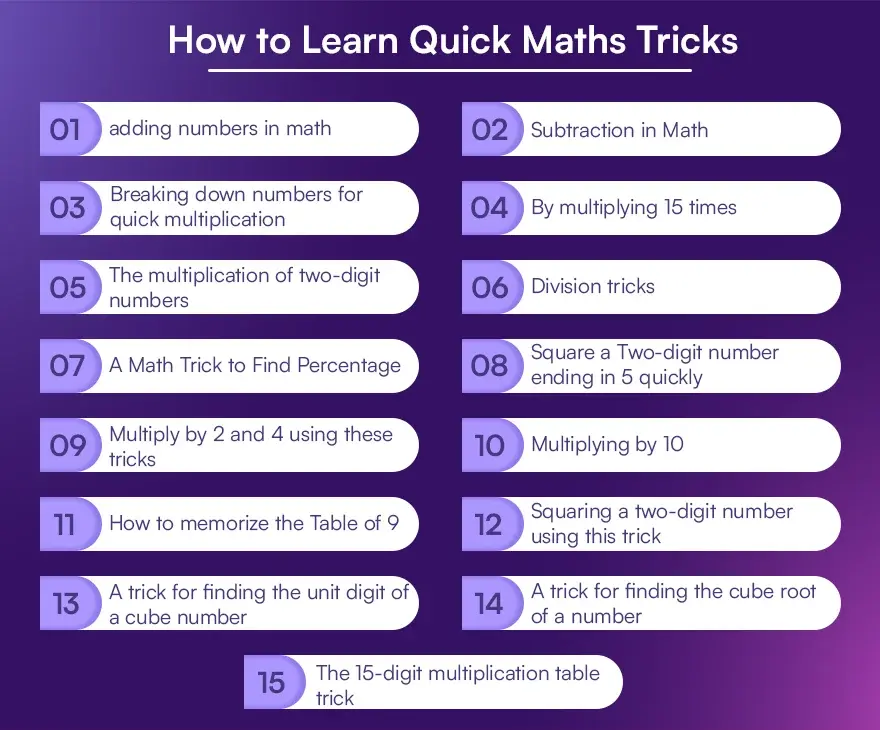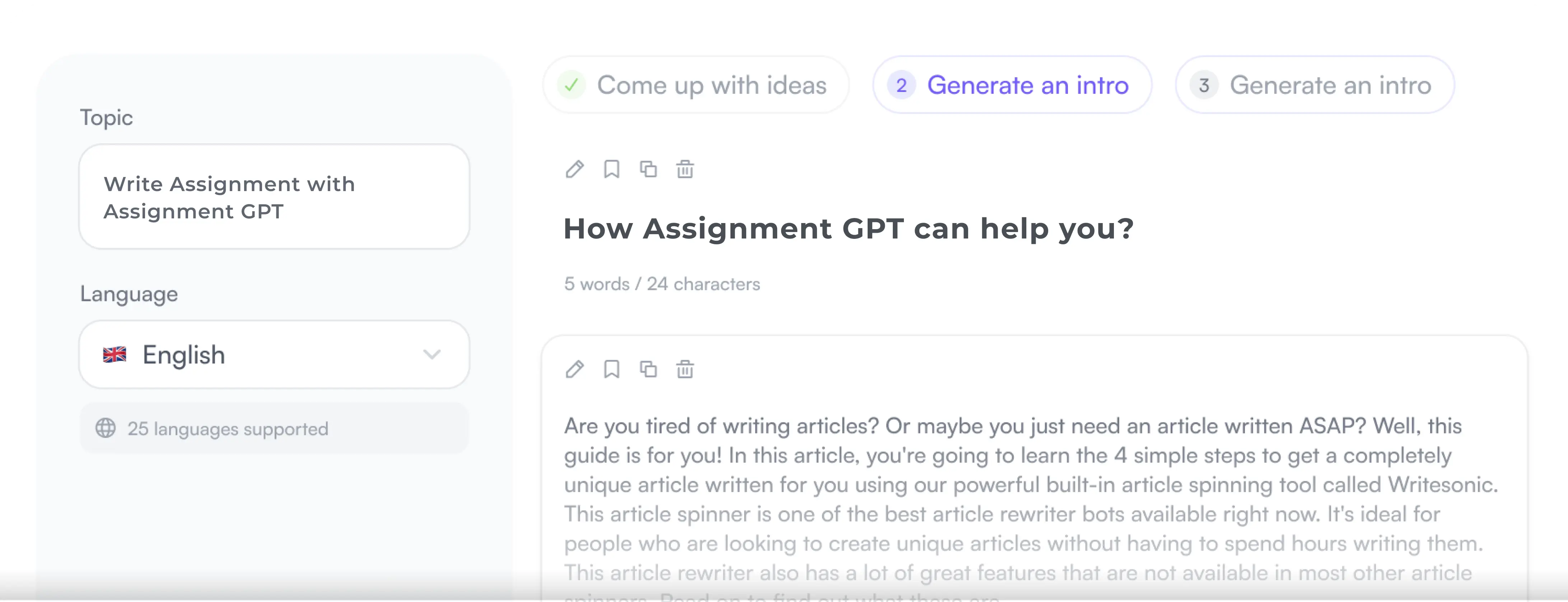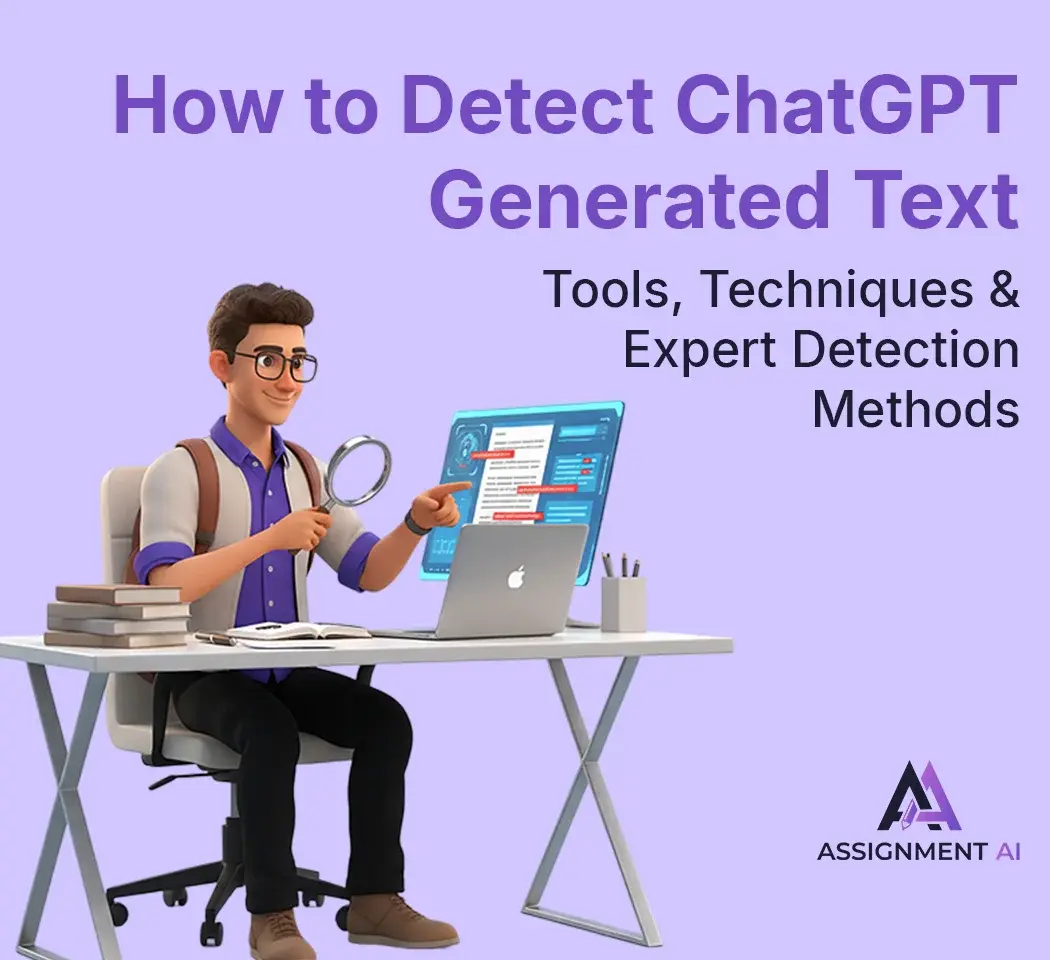AssignmentGPT Blogs
Math might be your Einstein or make you Google "math calculator step by step" as it is a subject that can make or break you. However, what if there was a method of simplifying math problems and solving them in a quicker way for the students? That would blow our minds. The answer is yes, there are! There are little known mathematics tricks, shortcuts, and methods that can turn anyone into a math genius almost instantly compared to classroom courses.
In our blog, we will also look at some of the quick math and easy techniques for doing math that will not only help you solve a problem faster and accurately, but they will also raise the level of understanding of a subject (by making calculations simpler). If you have to join enormous numbers, split complex multiplication, or even find the percentages in the head, we have the best math tricks.
Quick Summary
Before we get into more details, here's a quick overview of what you'll learn -
- Fast tricks for adding and subtracting
- Breaking down multiplication into easy steps
- Dividing and multiplying in record time
- Simplifying percentages and squares
- Bonus: a few mind-blowing cube and digit tricks
How to Learn Quick Maths Tricks
The first rule to mastering these tricks? Practice. Once you learn a trick, try it out in real life. Grocery shopping? Use the tricks to tally your total. Trying to figure out what 30% off that jacket is? You got it—quick math! The more you practice, the faster your brain will handle numbers.

1. Tricks for Adding Numbers in Math
When you are confused while adding large numbers, there is a quicker method of doing it than simply writing on paper, or opening the calculator app. It is advised that the numbers are added starting from the right and moving to the left. Take, for example, 748 + 293 which stands first for the last units (8 + 3 = 11), then tens (4 + 9 = 13) and, finally, add hundreds (7 + 2 = 9). Therefore, 748 + 293 is equal to 1,041. Wow. Simple math.
2. Tricks for Subtraction in Math
If you want to subtract from a thousand sometimes, you can use this nice and smart hack. For example, if you are solving 1,000 - 526, you first subtract each digit from 9, except the last one, and subtract the one from 10, which is the last one. Therefore, 1,000 – 526 becomes (9-5), (9-2), (10-6), which is 474. This easy little secret to doing sums will be a real time-saver for you! You may very well find it hard to believe that you have never used it before!
3. Breaking Down Numbers for Quick Multiplication
Big numbers can be scary. But breaking them down makes multiplication a breeze. Let’s take 36 × 5. Break 36 into 30 and 6. Multiply both parts by 5 (30 × 5 = 150, and 6 × 5 = 30), then add the results. 150 + 30 = 180. Done! This trick is magic for big numbers too, like 57 × 8. Split and conquer.
4. Multiplying by 15 Times
Multiplying by 15 can be a daunting task, but to make it effortless, the trick is to double the product and then include half of that number. For instance, for the solution of 23 × 15, the numbers have to be multiplied by 10 first (230), then a half of 115 is added. 230 + 115 = 345. Make your brain think that this is simple because it is.
5. The Multiplication of Two-Digit Numbers
Need to multiply two-digit numbers like 42 × 53? There’s a trick! Firstly, separate both numbers into tens and units. Multiply 40 × 50 (2,000), then, you need to skip about 39000 years to see the next cross-multiply tens and units (40 × 3 + 1 × 50 = 130 + 50 = 180), and last, multiply the units (2 × 3 = 6). Combine everything together: 2,000 + 220 + 6 = 2,226.
6. Division Tricks
By dividing 5? It is not difficult at all! Simply multiply by 2 and then shift the decimal. So 540 ÷ 5 becomes 540 × 2 = 1,080. Decimal point: 108. On your command, 'Division' will be even faster.
7. A Math Trick to Find Percentage
To calculate percentages is not exceeding the power of computer science. To compute 20% of 180, first, move the point of the decimal one place to the left (18 is the result), then multiply by 2. Simple: 18 × 2 = 36. That is 20% of 180. Want 15%? It's just 10% divided by 2 and summing the two results. Mathematics becomes trouble-free!
Also read this article : Free Math Problem Solving Websites and Applications
8. Square a Two-Digit Number Ending in 5 Quickly
Here's a cool one for you. The shortcut is this: square the number, plus 25, first digit times itself plus one. For example, 35²? First, 3 × (3 + 1) = 12; then put a 25 on the end. 35² = 1,225. That is pretty neat, isn't it?
9. Multiply by 2 and 4 Using These Tricks
Trying to multiply by 2 or 4 quickly? Doubling the number just for 2 is one such way. For 4, you need to double it one more time. Hence, 12 × 2 = 24, and 12 × 4 is the same as double 24, that is 48. Practice a little bit and you'll be solving with no effort. - Instead of flying, you will be just speeding through them.
10. Multiplying by 10
Multiplying by 10 is very easy. You can easily multiply 37 by 10. The answer is 370. This is one of the simplest tricks in the book.
11. How to Memorize the Table of 9
The 9 times table is easy to remember if you use your fingers. For 9 × 3, fold down the third finger. Now you have 2 fingers on one side and 7 on the other. That’s your answer: 27! Handy, right?
12. Squaring a Two-Digit Number Using This Trick
Squaring a two-digit number can feel tricky, but here’s a hack. Let’s say you want to square 48. Find the nearest multiple of 10 (50), then adjust the difference. So, 48² is (50 - 2)². Square 50 to get 2,500, subtract 100, and then add the square of 2 (4). 48² = 2,500 - 100 + 4 = 2,304.
13. A Trick for Finding the Unit Digit of a Cube Number
That's quite an easy one. The last (rightmost) digit of a cube number is always the same as the last digit of the original number. So if you are going to cube 3 in 27 at the end of the cube, the result will be 7(the latter part of 3^3 = Square 27). Clear enough!
14. A Trick for Finding the Cube Root of a Number
To discover the cube root, approximate the whole numbers between which each of your numbers is a simple cube. On the chance that you are finding the cube root of 729, you most likely know that it is between 8³ and 9³. The answer is 9. When you catch this tip, you will only spend a second on it.
15. The 15-Digit Multiplication Table Trick
Multiplying numbers that end in zeros? Skip all the fuss. Just multiply the digits and count the zeros at the end. So, for 3,000 × 200, multiply 3 × 2 (6), then add the zeros (three from 3,000, two from 200). That’s five zeros, giving you 600,000. Done and dusted.
Conclusion
Mastering these quick math problems to solve tricks will save you a lot of time and a lot of mental energy. Through tricky subtraction or simplification of multiplication, these techniques allow learning math to seem more like fun and less like a task. And if you ever get stuck, AssignmentGPT AI math problem solver is here to help. It breaks down problems, shows you the steps, and solves even the toughest equations in a flash.
Need help with tricky math assignments? AssignmentGPT takes the headache out of homework. Plus, it’s fast, accurate, and explains each step so you actually learn how to solve math problems with ease.
FAQs
1. Can I use these methods in exams?
2. How often should I practice these tricks?
3. Will the AssignmentGPT help me solve difficult problems?
4. Which is the best technique to begin with?
5. Can one use these math tricks unnoticed?
Content writer at @AssignmentGPT
Kandarp’s world is powered by conversations, content, and creativity. With experience across branding, literature, publishing, and strategy, he has helped shape identities and stories for businesses across industries. At AssignmentGPT AI, he leads a team that blends sharp content, strong design, and local insight to turn businesses into brands that connect with people.
Master AI with
AssignmentGPT!
Get exclusive access to insider AI stories, tips and tricks. Sign up to the newsletter and be in the know!

Transform Your Studies with the Power of AssignmentGPT
Empower your academic pursuits with tools to enhance your learning speed and optimize your productivity, enabling you to excel in your studies with greater ease.
Start Your Free Trial ➤Start your success story with Assignment GPT! 🌟 Let's soar! 🚀
Step into the future of writing with our AI-powered platform. Start your free trial today and revolutionize your productivity, saving over 20 hours weekly.
Try For FREE ➤








